All posts by Mads Herring Jensen
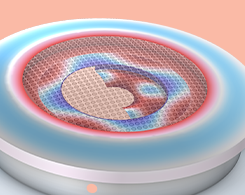
Full Acoustic Room Impulse Response of a Small Smart Speaker
The acoustic response of a small smart speaker can be modeled using the built-in hybrid FEM–ray coupling functionality in the COMSOL Multiphysics® software. Learn more here.
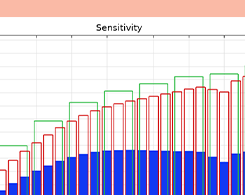
The Octave Band Plot for Acoustics Simulation
The Octave Band plot provides an easy and flexible way to represent any frequency response, transfer function, sensitivity curve, transmission loss, or insertion loss in your acoustics analyses.
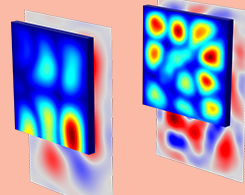
Modeling Sound Transmission Loss Through a Concrete Wall
The sound loss transmission (STL) through a building component is the logarithmic ratio between the total incident power on the structure relative to the total transmitted power.

Introduction to the Elastic Waves, Time Explicit Interface
From nondestructive testing to seismic wave propagation in soil and rock, there are many application areas that involve the propagation of elastic waves in solids and vibrations in structures.
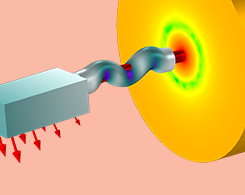
How to Use Solver Suggestions in Acoustics Modeling
When you model large, industry-scale acoustics, ever find it challenging to efficiently solve the problem with the hardware at hand? Enter the solver suggestions in COMSOL Multiphysics®.
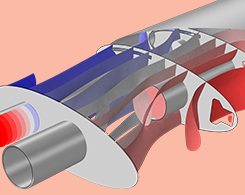
Using the Port Boundary Condition in Acoustic Waveguide Models
By combining several Port boundary conditions, you can easily compute the transmission and insertion loss in exhaust and muffler systems. See more benefits of this feature for acoustics modeling.
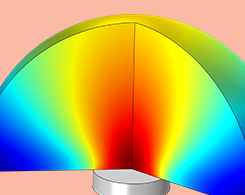
Fine-Tuning the Design of Piezoelectric Transducers with Simulation
A variety of use cases and a variety of physics: Piezoelectric transducer designs need to account for electric currents, pressure acoustics, stress-strain, and acoustic-structure interaction.
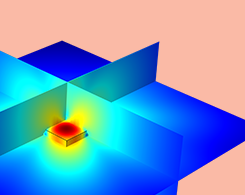
How to Use the Boundary Element Method in Acoustics Modeling
Learn advantages and strategies for using the boundary element method (BEM) for acoustics modeling. Plus, we go over a hybrid approach that combines BEM with the finite element method (FEM).
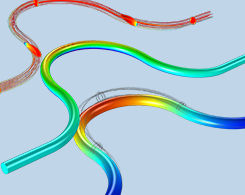
Modeling Aeroacoustics with the Linearized Navier-Stokes Equations
Get a comprehensive introduction to aeroacoustics modeling, as well as the linearized Navier–Stokes equations and how to implement them in COMSOL Multiphysics®.

Using the Discontinuous Galerkin Method to Model Linear Ultrasound
You can easily model acoustically large problems, like linear ultrasound, with a predefined physics interface that uses a memory-efficient approach called the discontinuous Galerkin method.
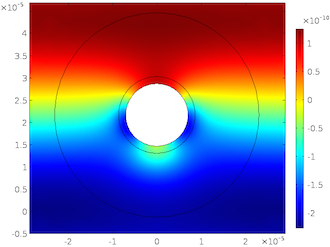
A Thermoviscous Analysis of Acoustic Radiation Forces
Learn how to determine acoustic radiation forces, including thermoviscous and acoustophoretic effects, in the COMSOL® software.
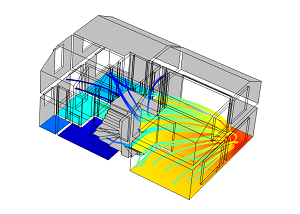
Modeling Room Acoustics with COMSOL Multiphysics
The field of room acoustics aims to study the sound quality of a space in a qualitative way. The Acoustics Module includes features to simulate the acoustics of rooms and other confined spaces.
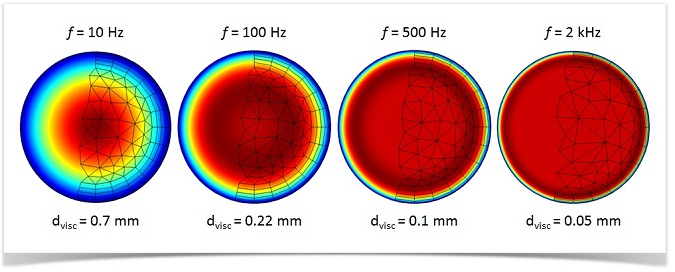
How to Model Thermoviscous Acoustics in COMSOL Multiphysics
Want to solve your acoustics model for acoustic pressure, velocity, or temperature variation? Enter the Thermoviscous Acoustics interface, which offers a simple and accurate way.
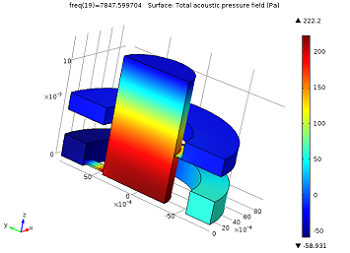
Theory of Thermoviscous Acoustics: Thermal and Viscous Losses
Here’s your comprehensive introduction to thermoviscous acoustics. Topics covered include theory, physics, boundary layers, bulk losses, attenuation, and narrow region acoustics.
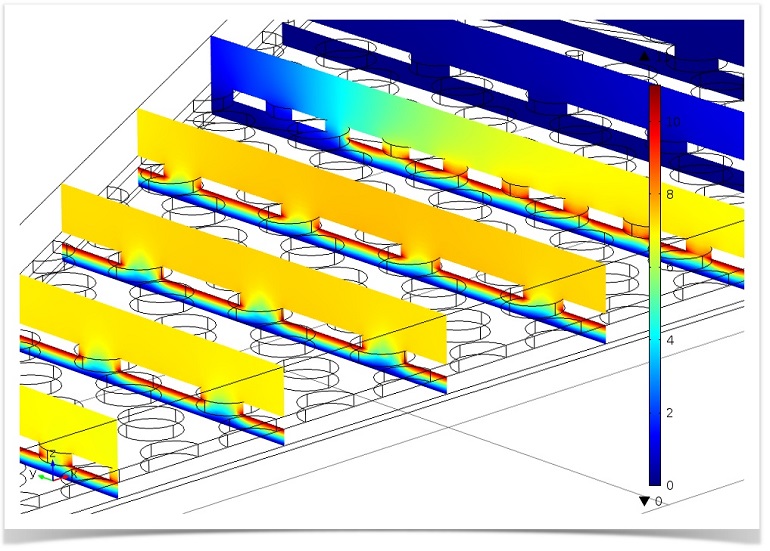
MEMS Microphone Model Presented at ASA 166 in San Francisco
What is a MEMS microphone? Learn about this versatile device, as well as how to model it using COMSOL Multiphysics® with the add-on MEMS Module and Acoustics Module.

Report from the Joint CAA-ASA Acoustics Conference
Last month, the Acoustical Society of America (ASA) and the Canadian Acoustical Association (CAA) held the 21st joint meeting of the International Congress on Acoustics (ICA) in Montreal, Canada. This joint congress is one of the major acoustics conferences of 2013, featuring a range of parallel sessions that covered most topics in acoustics. These included, among other things, psycho acoustics, underwater acoustics, transducer modeling, acoustics of musical instruments, nonlinear acoustics, and many more. This year’s acoustics conference also featured a […]
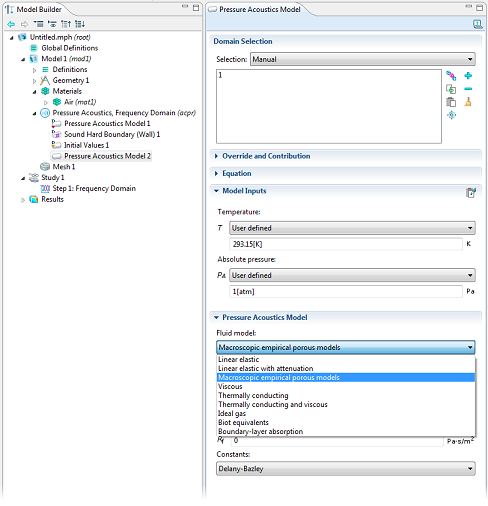
Modeling Acoustic Damping Processes
Mufflers are often located in exhaust systems or on heat, ventilation, and air conditioning (HVAC) systems, where their key functionality is to dampen the noise that is emitted from the system. A correct description of the acoustic damping (absorption and attenuation) processes in the muffler is important when designing and modeling these systems.
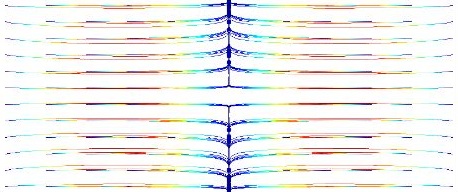
Acoustofluidic Multiphysics Problem: Microparticle Acoustophoresis
The use of acoustic waves to manipulate suspensions of particles, such as cells, has inspired the work of many researchers, paving the way for the field of ultrasound acoustofluidics. The manipulation is achieved in many ways, including using bulk acoustic waves (BAW) and surface acoustic waves (SAW), as well as acoustic radiation forces and acoustic streaming-induced drag. The latter two combine to produce the acoustophoretic motion of the suspended particles; i.e., movement by means of sound, and the methods provide […]
